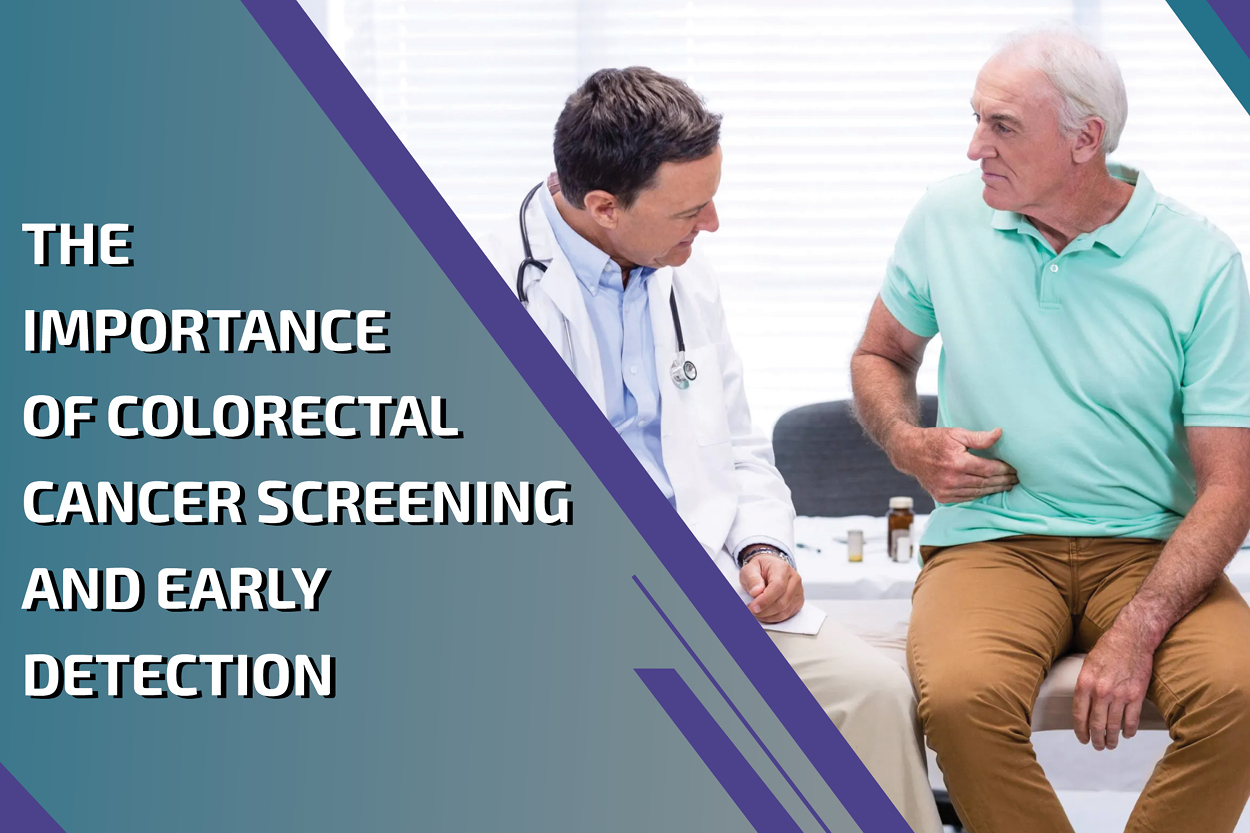Early Detection in Colorectal Cancer
March kicks off Colorectal Cancer Awareness Month, amplifying the conversation around Colorectal Cancer. During this time, it’s important to recognize colorectal cancer screening guidelines and ways to reduce your risk. Also called colon cancer or rectal cancer, colorectal cancer is a disease where cancer cells form in the tissues of the colon or the rectum at the end of the digestive tract. It can take many years for symptoms to appear, which is why early detection is key in the fight against colorectal cancer.
When to start screening?
-
It’s recommended that you start regular screening for colorectal cancer at age 45.
-
You might need to be screened before age 45 if you have an increased risk of developing colorectal cancer, like a family history of colorectal cancer, a personal history of inflammatory bowel disease, ulcerative colitis, Crohn’s disease, or other risk factors.
-
You should continue regular colorectal cancer screening through the age of 75 if you’re healthy and have a life expectancy of 10+ years.
-
If you’re between ages 76-85, factors like life expectancy, overall health, and prior screening history determine your doctor’s recommendation about if and when you should get screened.
-
If you’re over age 85, you likely won’t need a colorectal cancer screening.
There are several screening tests used to detect colorectal cancer. Colonoscopies are the most common type of colorectal cancer screening. Consult your healthcare provider about which test is right for you.
Screening Test Options
Stool Tests
-
The guaiac-based fecal occult blood test (gFOBT) uses the chemical guaiac to detect blood in the stool. Your healthcare provider will send you an at-home test kit. The process of using the at-home test kit includes using a stick or brush to obtain a small amount of stool. Once this is completed, you’ll return the test kit to your doctor or a lab, where the stool samples are analyzed for blood.
-
How often: Once every year
-
The fecal immunochemical test (FIT) uses antibodies to detect blood in the stool.
-
How often: Once every year
-
The FIT-DNA test (also called a stool DNA test) combines the FIT with a test that detects altered DNA in the stool. The process for this test includes collecting an entire bowel movement and sending it to a lab. The lab will test for altered DNA and blood.
-
How often: Once every year
Flexible Sigmoidoscopy
-
During this test, a short, thin, flexible, tube with a light will be placed into your rectum. Your doctor will look for polyps or cancer inside the rectum and lower third of the colon.
-
How often: Every 5 years, or every 10 years with a FIT every year
Colonoscopy
-
A colonoscopy examines the inner lining of the colon and rectum using a flexible tube with a camera attached. It is known as a colonoscope and is typically administered to look for cancer in people who don’t have symptoms. If any polyps or abnormalities are found, they may be removed or biopsied during the procedure. The procedure usually takes about 30 to 60 minutes. The colonoscopy can be used as a follow-up test if anything unusual is detected during a stool test or flexible sigmoidoscopy test.
-
How often: A normal colonoscopy means you can wait another 5-10 years to schedule your next colonoscopy, depending on what your doctor recommends.
CT Colonography (Virtual Colonoscopy)
-
Computed tomography (CT) colonography, also called a virtual colonoscopy, uses X-rays and computers to produce images of the entire colon.
-
How often: Every 5 years
The Importance of Colonoscopies
As the most common type of colorectal cancer screening, colonoscopies examine the colon for inflammation, abnormalities, like polyps, and other signs of colorectal cancer. The majority of colorectal cancers begin as abnormal growths known as precancerous polyps in the colon or rectum, and can take 10 to 15 years to develop into cancer. Because these polyps have a slow cancer growth rate and can present no symptoms, regular colorectal cancer screening, especially through colonoscopies, is crucial for removing precancerous polyps before they turn into colorectal cancer or early detection of colorectal cancer if it’s present. Colorectal cancer can be easier to treat when it’s found early, small, and hasn’t spread.
Sources:
American Cancer Society: American Cancer Society Guideline for Colorectal Cancer Screening
CDC: Colorectal Cancer Screening Tests
NIH: National Cancer Institute: Colorectal Cancer Prevention (PDQ®)–Patient Version

